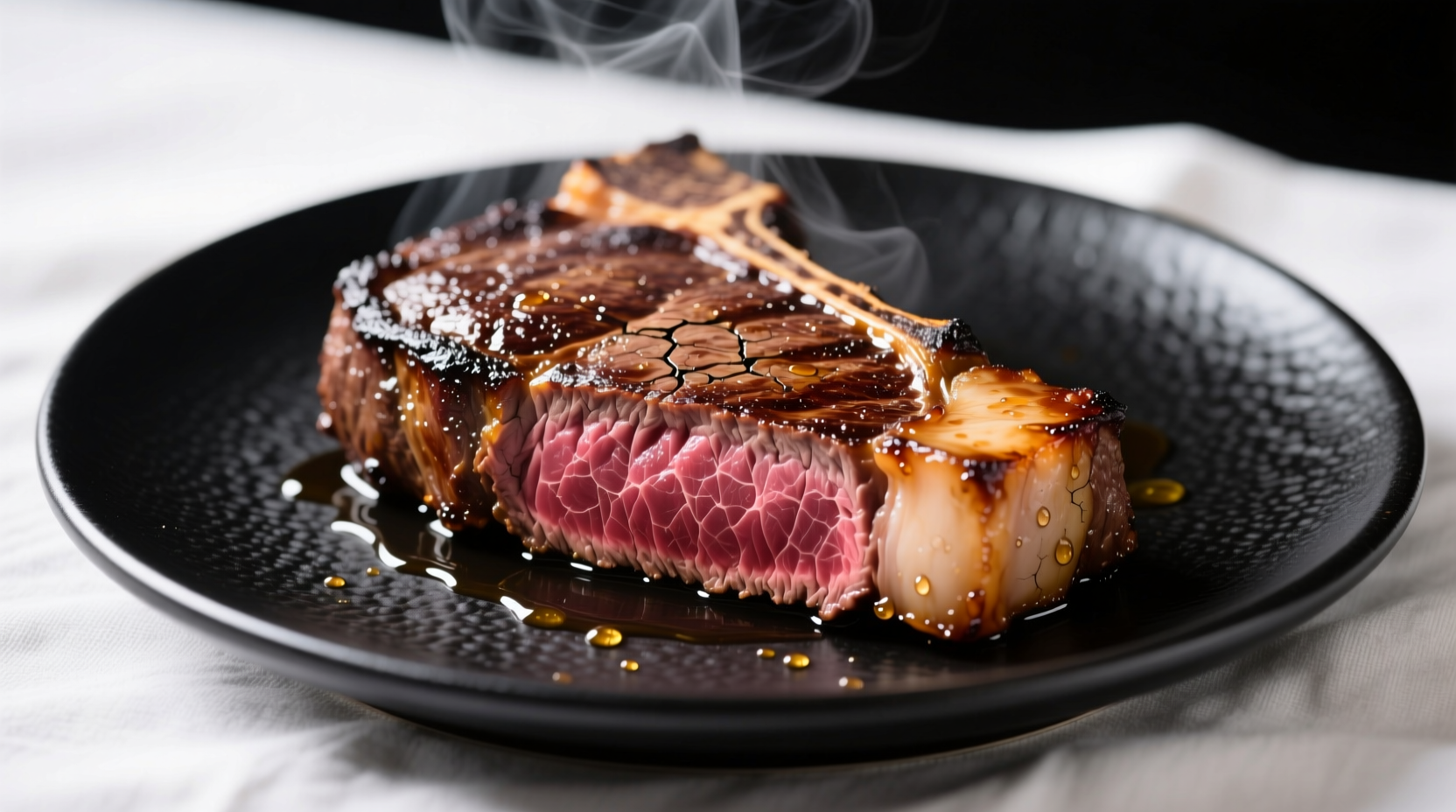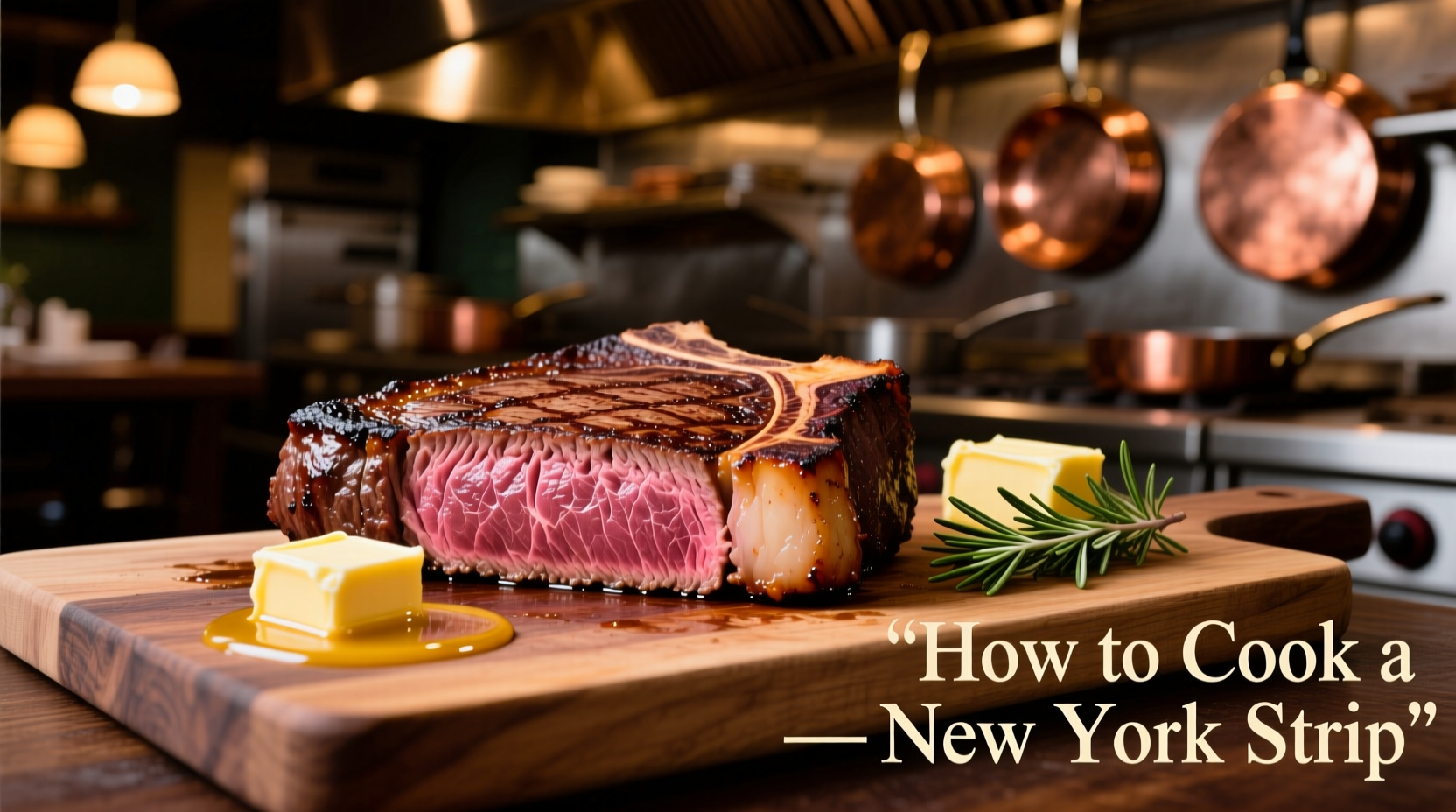The Ultimate Guide to Cooking New York Strip Steak Perfectly
Nothing compares to a perfectly cooked New York strip steak – juicy, tender, with a beautifully caramelized crust and rich beefy flavor. This guide delivers professional techniques you can use at home to transform this premium cut into a memorable meal. Whether you're cooking for a special occasion or elevating your weeknight dinner, these evidence-based methods guarantee success every time.
Why New York Strip Deserves Special Attention
The New York strip (also called strip loin, Kansas City strip, or top loin) comes from the short loin section, offering the ideal balance of marbling and tenderness. Unlike filet mignon, it has robust flavor; unlike ribeye, it's leaner while still delivering that signature beefiness. According to the USDA, proper cooking temperature is critical for both safety and quality – undercooked steak risks foodborne illness, while overcooking destroys its delicate texture.
Essential Equipment Checklist
- Cast-iron or heavy-bottomed stainless steel skillet (retains heat better than non-stick)
- Instant-read thermometer (Thermapen recommended by culinary institutes)
- Tongs (never pierce the steak with a fork)
- Wire rack for resting
- Aluminum foil for tenting
Selecting Your Steak: What Matters Most
Start with quality: Choose USDA Prime or Choice grade with even marbling throughout. Thickness matters – 1.5 inches is ideal for proper searing without overcooking the center. As noted by the American Meat Science Association, thicker cuts provide a larger margin of error for achieving perfect doneness.
Step-by-Step Cooking Process
Preparation Timeline (The Critical First Steps)
Proper preparation makes or breaks your steak. This 45-60 minute process ensures even cooking:
- Remove from refrigerator 45-60 minutes before cooking – brings steak to room temperature for even cooking (critical step often skipped by home cooks)
- Pat completely dry – moisture is the enemy of proper searing
- Season generously – use coarse kosher salt (1 tsp per pound) and freshly ground black pepper
- Optional enhancement – add garlic powder or smoked paprika for complexity
The Perfect Sear Technique
Heat your skillet over medium-high heat for 5 minutes until smoking hot. Add 1 tablespoon high-smoke point oil (avocado or grapeseed). Place steak in skillet away from you to avoid oil splatter. Do not move it for 3-4 minutes to develop a proper crust. Flip once using tongs and sear the other side.
| Doneness Level | Internal Temperature | Visual/Tactile Cue | Resting Time |
|---|---|---|---|
| Rare | 120-125°F | Cool red center, soft like cheek | 8-10 minutes |
| Medium-rare | 130-135°F | Warm red center, soft like chin | 10 minutes |
| Medium | 140-145°F | Warm pink center, springy like forehead | 10-12 minutes |
| Medium-well | 150-155°F | Small amount of pink, firm | 12-15 minutes |
| Well-done | 160°F+ | Little to no pink, very firm | 15+ minutes |
Finishing Methods: Choose Your Approach
For steaks thicker than 1.5 inches, finishing in the oven prevents overcooking the exterior:
- Standard method: After searing both sides, transfer skillet to 400°F oven until reaching target temperature (about 5-8 minutes)
- Reverse sear (best for thick cuts): Start in 275°F oven until internal temp reaches 115°F, then sear for 60-90 seconds per side
- Grill method: Sear over direct high heat, then move to indirect heat to finish cooking
The Non-Negotiable Resting Period
Resting allows juices to redistribute. As explained by the Food Lab, skipping this step causes up to 40% of juices to escape when cutting. Tent loosely with foil and rest for 10 minutes (5 minutes per inch of thickness).

Avoid These 5 Common Mistakes
- Skipping the dry step – moisture prevents proper browning
- Using cold steak – leads to uneven cooking and gray bands
- Overcrowding the pan – drops temperature and steams instead of sears
- Flipping too often – prevents proper crust formation
- Cutting too soon – releases precious juices onto the cutting board
Serving Your Perfect New York Strip
Slice against the grain at a 45-degree angle for maximum tenderness. Serve with simple accompaniments that won't overpower the steak: roasted vegetables, garlic mashed potatoes, or a light arugula salad. For extra flavor, top with a pat of compound butter or a drizzle of high-quality finishing salt.
When to Choose Alternative Methods
While the stovetop-to-oven method works best for most home kitchens, consider these context boundaries:
- Outdoor grilling: Ideal for summer cooking; use two-zone fire for better temperature control
- Sous vide: Best when precise temperature control is critical (special occasions)
- Air fryer: Only recommended for thinner cuts (under 1 inch)











 浙公网安备
33010002000092号
浙公网安备
33010002000092号 浙B2-20120091-4
浙B2-20120091-4